The Kingdom of Polonnaruwa rose to prominence in the 11th century CE, following the decline of Anuradhapura. It became the second capital of Sri Lanka after the Chola invaders from South India sacked Anuradhapura and established Polonnaruwa as their administrative center.
Table of Contents
Introduction
Sri Lanka is a land of rich historical and cultural heritage, with its ancient cities standing as testament to the grandeur of bygone eras. Among these, the Kingdom of Polonnaruwa holds a prominent place as a significant historical city and a center of Buddhism. This article explores the history of the Kingdom of Polonnaruwa, its cultural significance, traditional practices, and other captivating aspects that make it an attractive tourist destination.
Historical Overview of the Kingdom of Polonnaruwa
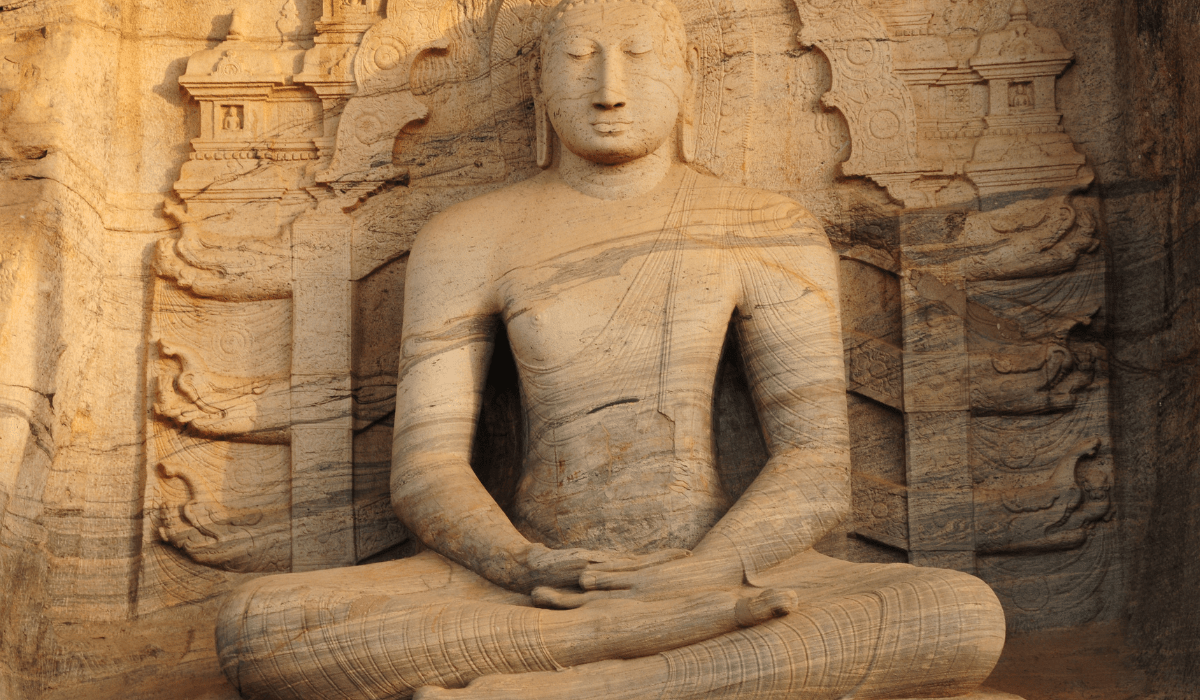
The Rise of Polonnaruwa
The Kingdom of Polonnaruwa rose to prominence in the 11th century CE, following the decline of Anuradhapura. It became the second capital of Sri Lanka after the Chola invaders from South India sacked Anuradhapura and established Polonnaruwa as their administrative center. This shift marked the beginning of a new chapter in Sri Lankan history, characterized by political stability, economic prosperity, and cultural renaissance.
Prominent Kings and Their Contributions
- King Vijayabahu I (1055-1110 CE): King Vijayabahu I is credited with liberating Sri Lanka from Chola rule and re-establishing the Sinhalese monarchy. His reign marked the beginning of the Polonnaruwa period. He focused on rebuilding the nation, restoring Buddhist temples, and reviving the economy.
- King Parakramabahu I (1153-1186 CE): Known as one of the greatest kings of Sri Lanka, King Parakramabahu I brought Polonnaruwa to its zenith. His reign saw extensive construction projects, including the creation of the vast Parakrama Samudra reservoir, which showcases advanced hydraulic engineering. He also promoted Buddhism and supported the arts and culture, leading to a golden age for the kingdom.
- King Nissanka Malla (1187-1196 CE): King Nissanka Malla continued the development of Polonnaruwa, focusing on infrastructure, religious buildings, and public works. He is known for his inscriptions and efforts to establish his legitimacy through religious and cultural patronage.
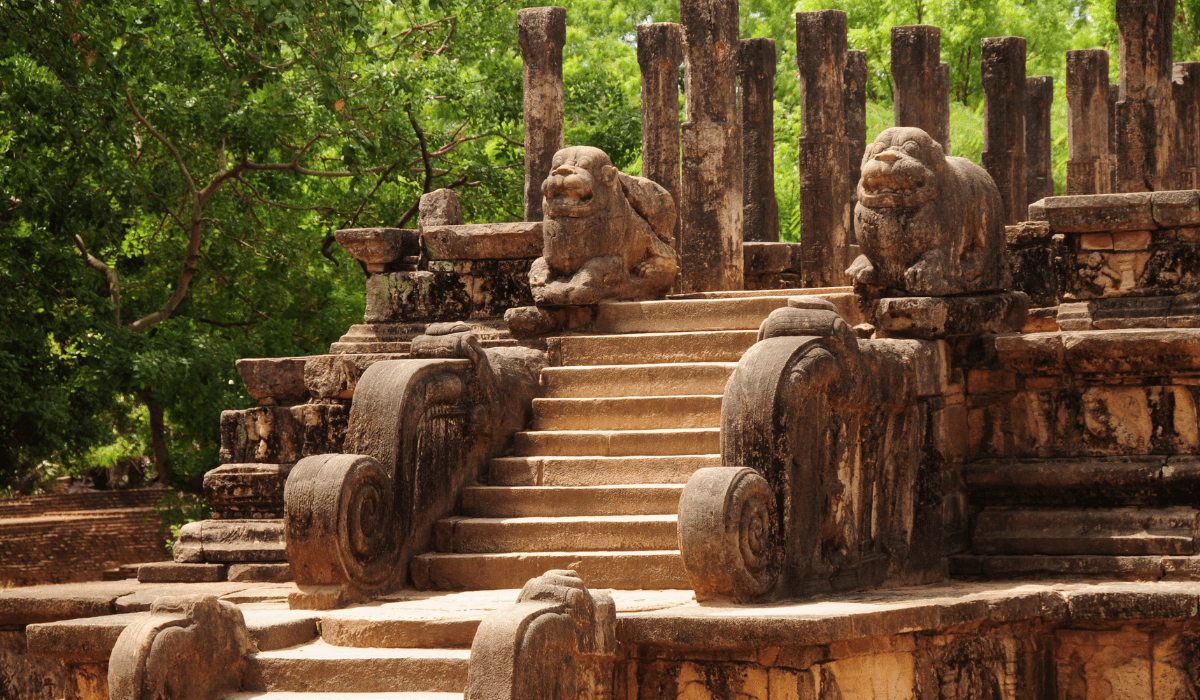
The Decline of Polonnaruwa
The Kingdom of Polonnaruwa began to decline in the late 13th century due to internal strife, invasions, and shifting political centers. The constant threat from South Indian invasions and internal power struggles weakened the kingdom, leading to its eventual abandonment as the capital. The center of power moved further south to the Kingdom of Kotte, marking the end of Polonnaruwa’s era of prominence.
Cultural Significance of Polonnaruwa
Architectural Marvels
Polonnaruwa is renowned for its architectural and engineering feats, many of which remain well-preserved and continue to attract visitors from around the world. The city boasts an array of impressive structures, including stupas, temples, palaces, and reservoirs.
- Royal Palace: The Royal Palace of King Parakramabahu I, also known as the Vijayanta Pasada, is a sprawling complex that once housed the royal court and administrative offices. The palace, with its multi-storied structure and grand halls, reflects the architectural brilliance of the period.
- Gal Vihara: One of the most iconic monuments in Polonnaruwa, the Gal Vihara is a rock temple featuring four magnificent Buddha statues carved into a single granite rock. These statues, depicting different postures of the Buddha, are considered masterpieces of Sri Lankan art and sculpture.
- Rankoth Vehera: This large stupa, built by King Nissanka Malla, stands as a testament to the kingdom’s devotion to Buddhism. Its imposing structure and intricate design make it a prominent landmark in Polonnaruwa.
- Parakrama Samudra: An artificial reservoir built by King Parakramabahu I, the Parakrama Samudra is a marvel of ancient hydraulic engineering. It played a crucial role in supporting agriculture and ensuring the prosperity of the kingdom.
Religious and Cultural Hub
Polonnaruwa served as a major religious and cultural hub, with Buddhism playing a central role in the life of the city. The kingdom was home to numerous monasteries, temples, and stupas, which attracted monks, scholars, and pilgrims from across the Buddhist world.
- Lankatilaka Temple: This imposing brick structure, housing a colossal standing Buddha statue, is one of the most impressive temples in Polonnaruwa. Its architectural style reflects a blend of traditional Sinhalese and South Indian influences.
- Kiri Vehera: A large white stupa believed to have been built by Queen Subhadra, the Kiri Vehera is another significant religious monument in Polonnaruwa. It is known for its well-preserved structure and serene ambiance.
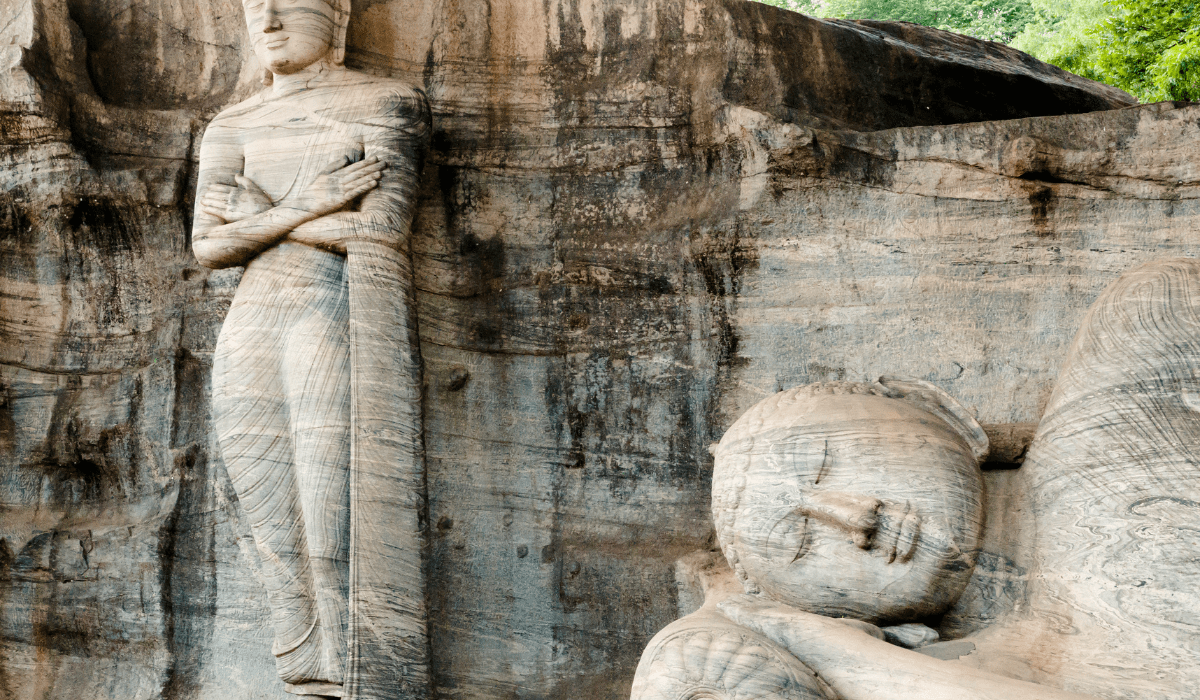
Traditional Practices and Activities
Buddhist Pilgrimage
Polonnaruwa remains an important pilgrimage site for Buddhists. Pilgrims visit the city to pay homage to its numerous sacred sites and participate in religious ceremonies and rituals.
- Sacred Tooth Relic Procession: Similar to the Esala Perahera in Kandy, Polonnaruwa also hosts a procession honoring the Sacred Tooth Relic of the Buddha. This event features traditional dance, music, and cultural performances, attracting both locals and tourists.
- Meditation Retreats: Polonnaruwa offers serene environments for meditation and spiritual practice. Several monasteries and meditation centers provide retreats and programs for those seeking spiritual growth and inner peace.
Festivals and Ceremonies
Polonnaruwa hosts various religious festivals and ceremonies throughout the year, offering visitors a glimpse into the rich cultural traditions of Sri Lanka.
- Vesak Festival: Celebrated in May, the Vesak Festival commemorates the birth, enlightenment, and death of the Buddha. The city is adorned with lanterns, decorations, and illuminations, creating a festive atmosphere.
- Poson Festival: Celebrated in June, this festival marks the arrival of Buddhism in Sri Lanka. Polonnaruwa, like other major Buddhist centers, hosts religious observances, processions, and almsgiving during this period.
Polonnaruwa as a Center for Buddhism
The Spread of Buddhism
Polonnaruwa played a pivotal role in the spread and development of Theravada Buddhism in Sri Lanka. The city’s monasteries and temples served as centers of learning and practice, attracting monks and scholars who contributed to the dissemination of Buddhist teachings.
- Alahana Pirivena: This ancient monastic university was a major center of Buddhist learning during the Polonnaruwa period. It housed thousands of monks and offered education in Buddhist philosophy, literature, and other disciplines.
- Jetavana Monastery: Another significant monastic complex, the Jetavana Monastery, was an important center for Buddhist scholarship and practice. It played a key role in preserving and propagating the teachings of the Buddha.
Buddhist Art and Architecture
Polonnaruwa is renowned for its contributions to Buddhist art and architecture. The city’s stupas, sculptures, and paintings reflect the artistic achievements of ancient Sri Lanka and continue to inspire admiration and reverence.
- Statues of the Buddha: Polonnaruwa is home to numerous Buddha statues, each showcasing the artistic finesse and spiritual devotion of the period. The statues at Gal Vihara, in particular, are celebrated for their serene expressions and intricate details.
- Temple Murals: The temples of Polonnaruwa feature exquisite murals depicting scenes from the life of the Buddha and other Buddhist narratives. These paintings offer insights into the religious and cultural life of the kingdom.
Modern-Day Polonnaruwa: A Tourist Attraction
Attractions for Tourists
Today, Polonnaruwa stands as a UNESCO World Heritage Site and a major tourist attraction in Sri Lanka. The city’s ancient ruins, coupled with its serene ambiance, make it a compelling destination for history enthusiasts, pilgrims, and cultural travelers.
- Exploring the Ruins: Visitors can explore the extensive ruins of Polonnaruwa, including its stupas, temples, palaces, and reservoirs. Guided tours offer insights into the city’s history and significance.
- Bicycle Tours: One of the best ways to explore Polonnaruwa is by bicycle. Numerous rental services are available, allowing tourists to leisurely explore the city’s vast archaeological site.
- Wildlife and Nature: Polonnaruwa is surrounded by lush greenery and wildlife. The nearby Minneriya National Park is a popular destination for wildlife enthusiasts, offering the chance to see elephants, leopards, and a variety of bird species.
Promoting Sustainable Tourism
Efforts are being made to promote sustainable tourism in Polonnaruwa, ensuring that the city’s cultural heritage is preserved for future generations. Initiatives include:
- Conservation Projects: Restoration and conservation projects are ongoing to preserve the ancient structures and artifacts of Polonnaruwa.
- Eco-Friendly Practices: Promoting eco-friendly practices among tourists, such as minimizing waste and respecting local customs and traditions.
- Community Involvement: Encouraging local community involvement in tourism activities, ensuring that they benefit economically and socially from tourism.
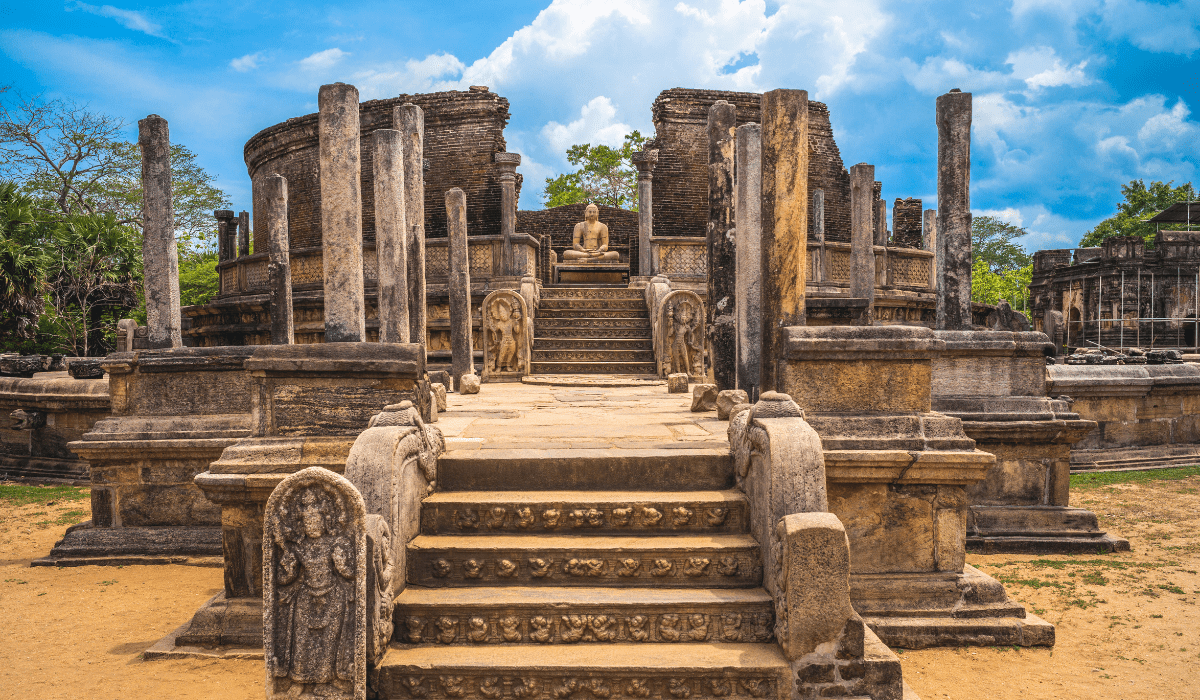
Practical Information for Visitors
Getting to Polonnaruwa
Polonnaruwa is well-connected by road and rail, making it easily accessible from major cities in Sri Lanka. Regular bus and train services operate between Polonnaruwa and Colombo, Kandy, and other key destinations. Private transport options, such as taxis and rental cars, are also available.
Best Time to Visit
The best time to visit Polonnaruwa is during the dry season, which runs from May to September. During this period, the weather is favorable for exploring the ruins and participating in outdoor activities. The months of July and August are particularly popular due to the Vesak and Poson festivals.
Accommodation and Facilities
Polonnaruwa offers a range of accommodation options to suit different budgets, from luxury hotels to budget guesthouses. Many hotels provide amenities such as swimming pools, restaurants, and guided tours. It is advisable to book accommodation in advance, especially during peak tourist seasons.
Conclusion
The Kingdom of Polonnaruwa stands as a testament to the rich historical and cultural heritage of Sri Lanka. With its impressive architectural marvels, religious significance, and serene natural surroundings, Polonnaruwa offers a unique and enriching experience for visitors. As a center of Buddhism and a symbol of Sri Lanka’s glorious past, Polonnaruwa continues to inspire and captivate travelers from around the world.
For those planning a trip to Sri Lanka, a visit to the Kingdom of Polonnaruwa promises to be a transformative journey that offers profound insights into the island’s history, culture, and spiritual traditions. Embrace the opportunity to explore this ancient city and immerse yourself in the timeless beauty and heritage of Sri Lanka.

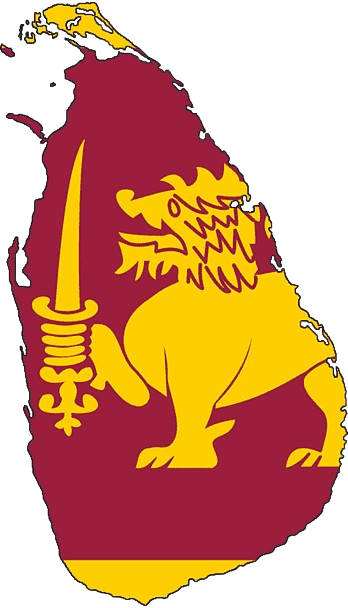

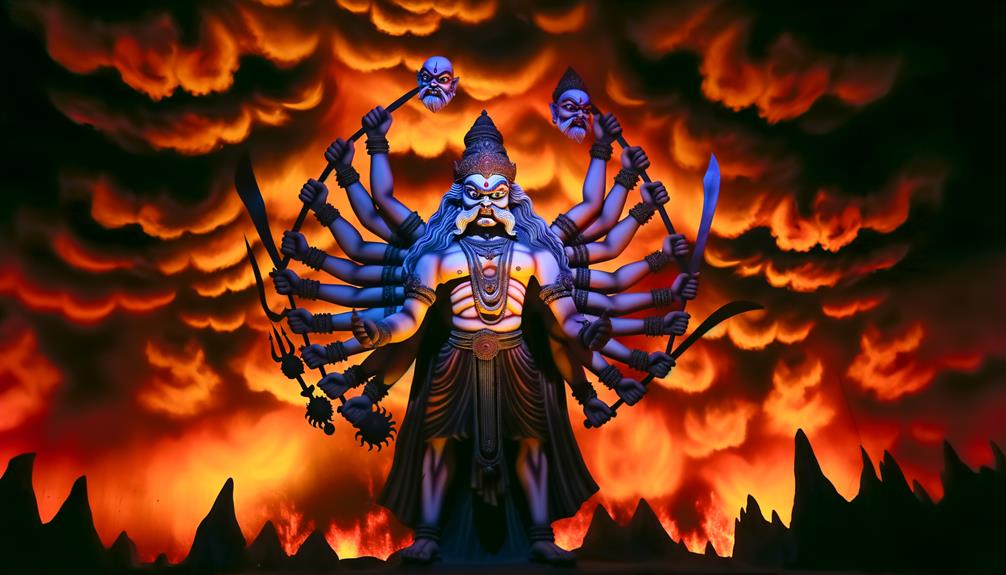

2 thoughts on “Kingdom of Polonnaruwa: A Historical and Cultural Jewel of Sri Lanka.”
Comments are closed.